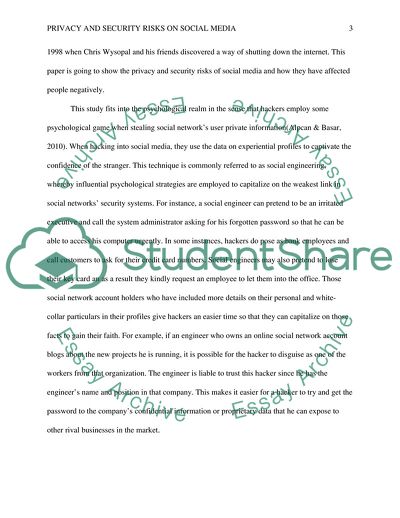Cite this document
(The Dark Side of Social Media Privacy and Security risks of Social Media Essay Example | Topics and Well Written Essays - 2500 words, n.d.)
The Dark Side of Social Media Privacy and Security risks of Social Media Essay Example | Topics and Well Written Essays - 2500 words. https://studentshare.org/journalism-communication/1879457-the-dark-side-of-social-media-privacy-and-security-risks-of-social-meida
The Dark Side of Social Media Privacy and Security risks of Social Media Essay Example | Topics and Well Written Essays - 2500 words. https://studentshare.org/journalism-communication/1879457-the-dark-side-of-social-media-privacy-and-security-risks-of-social-meida
(The Dark Side of Social Media Privacy and Security Risks of Social Media Essay Example | Topics and Well Written Essays - 2500 Words)
The Dark Side of Social Media Privacy and Security Risks of Social Media Essay Example | Topics and Well Written Essays - 2500 Words. https://studentshare.org/journalism-communication/1879457-the-dark-side-of-social-media-privacy-and-security-risks-of-social-meida.
The Dark Side of Social Media Privacy and Security Risks of Social Media Essay Example | Topics and Well Written Essays - 2500 Words. https://studentshare.org/journalism-communication/1879457-the-dark-side-of-social-media-privacy-and-security-risks-of-social-meida.
“The Dark Side of Social Media Privacy and Security Risks of Social Media Essay Example | Topics and Well Written Essays - 2500 Words”. https://studentshare.org/journalism-communication/1879457-the-dark-side-of-social-media-privacy-and-security-risks-of-social-meida.


